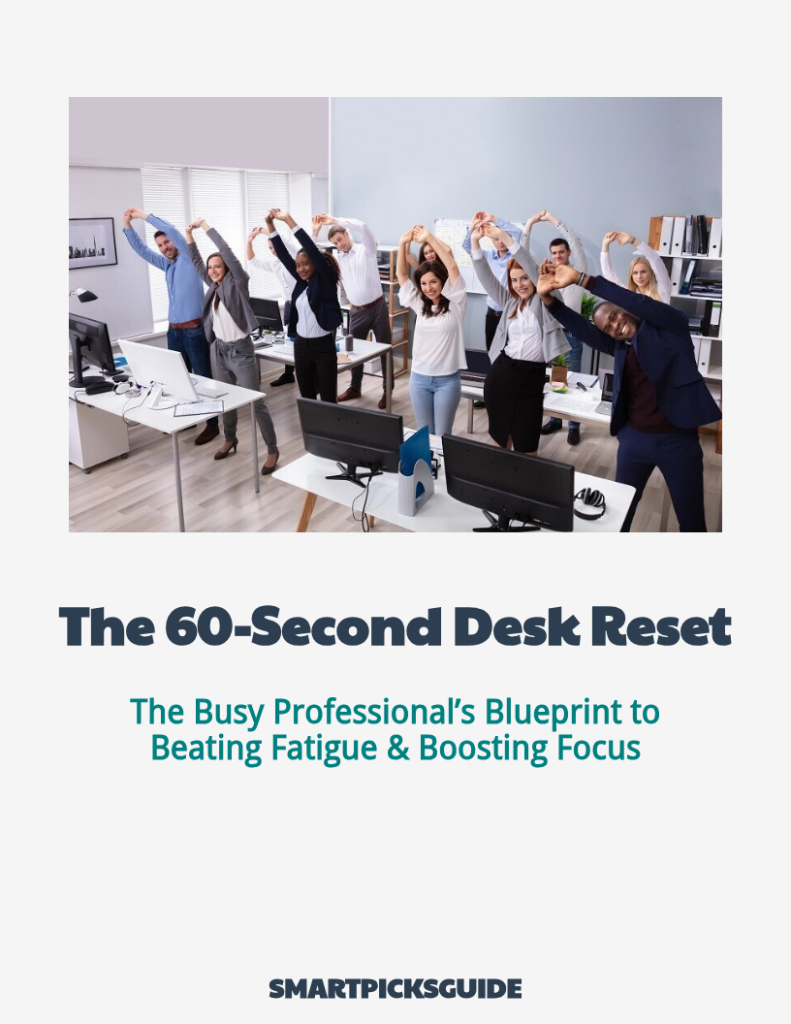
What If Just 1 Minute at Your Desk Could Change Everything?
Sign up for FREE membership and receive:
Exclusive Guide: “The 60 Seconds Reset” – The Busy Professional’s Blueprint.
Articles and newsletter to help you beat desk fatigue, eliminate aches, and unlock your most productive workdays… without ever leaving your desk.
You’re deep in a project, feeling productive. Then suddenly… nothing. Your thoughts scatter like startled birds. Reading the same sentence three times yields no comprehension. The simplest decisions feel overwhelming.

“I just need to focus harder,” you tell yourself, pressing on against this invisible resistance.
But what if these mental blocks aren’t random interruptions? What if they’re actually predictable, systematic responses to how you’re working?
Most of us treat brain fog as an inexplicable glitch. Something to power through with more coffee or sheer willpower. We blame our concentration, our sleep quality, or our stress levels. But rarely do we recognize the pattern that’s been forming right in front of us all along.
Your cognitive function follows rhythms tied directly to your physical state. Those mental blocks aren’t coming out of nowhere. They’re arriving precisely when your body has accumulated enough tension, immobility, and oxygen deficit to trigger a protective slowdown.
That midday mental fog? It typically arrives after about 90, 120 minutes of uninterrupted sitting. The post, lunch concentration crash? It’s less about digestion and more about the two, hour posture prison you’ve subjected yourself to.
The pattern becomes clearer when you track it: periods of deep focus followed by increasingly frequent mental interruptions until you hit a wall. What feels random is actually your body sending increasingly urgent signals that your current working state isn’t sustainable.
Our modern workspaces aren’t designed for cognitive endurance. We’ve created environments that demand mental marathons while keeping our bodies in static positions that actively work against clear thinking. Screen glare induces subtle eye strain. Fixed posture restricts blood flow. Shallow desk breathing reduces oxygen to the brain.
The most revealing evidence comes from those rare days when the fog never descends. What was different? Often, it wasn’t the quality of your sleep or the complexity of your work; it was the pattern of movement throughout your day.
Research in cognitive ergonomics shows that mental performance isn’t just about mental habits. It’s deeply intertwined with physical patterns, particularly how—and how often—you move between focused work sessions.
Here’s the good news: once you recognize that brain fog follows a predictable pattern, you can intervene before the fog rolls in completely.
What if you could reset your cognitive function in just sixty seconds? Not with another productivity app or elaborate routine, but with a simple physical reset that addresses the root cause of your mental blocks?
Our 60 Second Desk Reset might be exactly what your brain has been silently asking for. Because sometimes, the solution to mental fog isn’t trying to think differently. It’s changing how your body supports your thinking.
